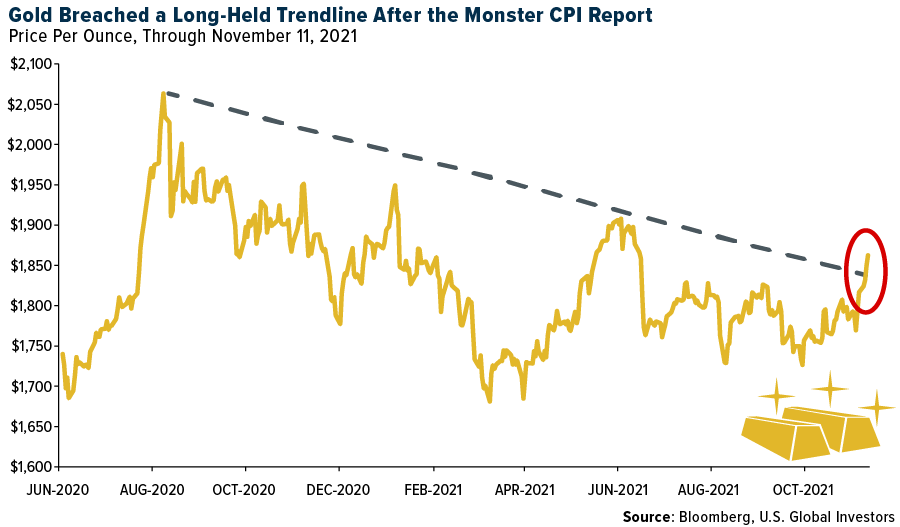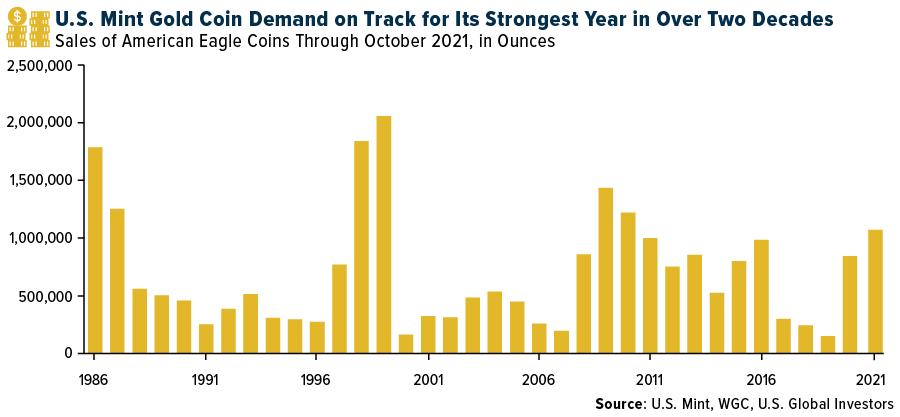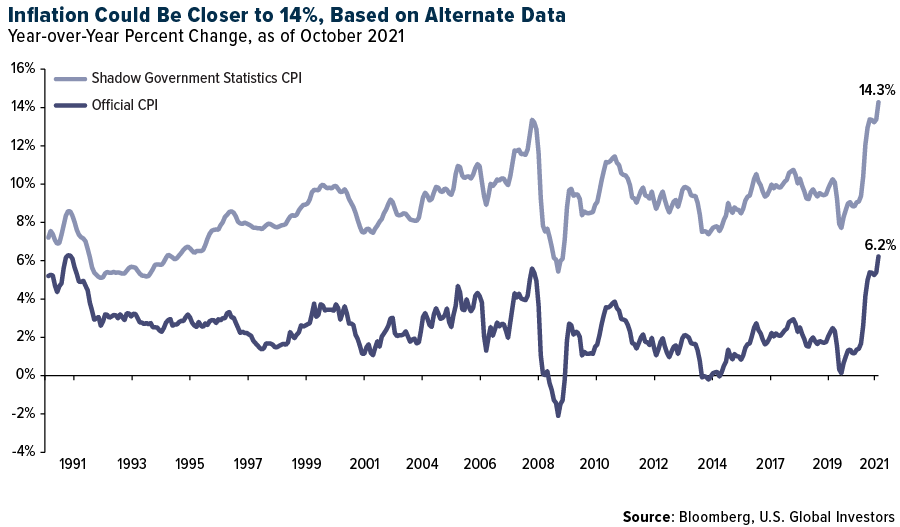Back in December 1997, the Financial Times ran a now-infamous article titled “Death of Gold.”
In it, the author Kenneth Gooding claimed that as an investment, “gold is a goner.” The crises of the past 10 years, (like the 1987 stock market crash, the Gulf War, and Asia’s financial meltdown), had not resulted in higher demand, as one might expect. Gold was now a “mere metal” and a “bad investment,” Gooding concluded.
But as it happened, reports of gold’s death were greatly exaggerated. The next decade saw the precious metal steadily rise in price, eventually hitting a then-record high of $1,921 an ounce in August 2011, for an increase of approximately 580% from when the Times published its obituary.
Fast forward to today, and the same gloomy prognoses are being made about the “barbarous relic,” often by people who least understand it. And just as Gooding was proven wrong, today’s doomsayers may end up wrong again.
Consider the week ending November 12. Gold performed as expected, rising 2.56%, following a consumer price index (CPI) report that showed inflation skyrocketing 6.2% in October compared to this time last year. After advancing for a seventh straight trading day on Friday, November 12, (its longest winning streak since May), the yellow metal broke out of its downward trend going back to August 2020, when it hit its all-time high of $2,073 per ounce.

An individual investor shouldn’t expect to get rich investing in gold. Instead, it should be held as a hedge against poor monetary and fiscal policy. This is why nearly every central bank on the planet has gold on its balance sheet.
Gold Coin Sales at Highest Level Since 2010
Speaking of balance sheets, the Federal Reserve’s asset purchases continue to rise to unprecedented levels, despite Jerome Powell’s earlier announcement that the bank would begin tapering this month. According to Bloomberg’s Lisa Abramowicz, official holdings now stand at a record $8.58 trillion, or about a third of U.S. gross domestic product (GDP).
This, as well as blistering inflation, have prompted buyers to purchase American Eagle gold coins at a healthy rate this year. According to the World Gold Council (WGC), 2021-coin sales at the U.S. Mint have totaled more than 1 million ounces through the end of October, the greatest amount since 2010. Sales appears to be on track to be the best in over two decades, the WGC reports.

Inflation Likely Much Higher Than Official Reports
Some investors have been raising questions about the accuracy of the CPI in measuring inflation. Consumer prices may be up much higher than is being reported by the Bureau of Labor Statistics (BLS). Let’s consider used vehicle prices. After dipping slightly in July and August, prices increased a whopping 38% year-over-year in October, according to Manheim data. What’s more, this was the first October in Manheim’s data collection, which goes back to 1997, to see a non-seasonally adjusted price increase.
A popular source of alternate inflation data is Shadow Government Statistics, which is maintained by economist John Williams. On his site, John compares the official CPI to inflation for today as if it were calculated using the methodology from 1980. As one can see, inflation is closer to 14% right now using that methodology, well above the 6.2% being reported.

With inflation at an approximately 30-year high, it may be rational and wise to have gold in one’s portfolio. Some investment advisors recommend a 10% weighting, with 5% in bars, coin, and 24-karat jewelry, and the other 5% in high-quality gold mining stocks and ETFs. Remember to rebalance once a year or even once a quarter.
Interested in investing in gold? Hoping to gain exposure to the gold mining industry, including production and gold royalty companies? Well, look no further! Explore the GOAU ETF today.
All opinions expressed and data provided are subject to change without notice. Some of these opinions may not be appropriate to every investor.
The Consumer Price Index (CPI) is one of the most widely recognized price measures for tracking the price of a market basket of goods and services purchased by individuals. The weights of components are based on consumer spending patterns.
Please carefully consider a fund’s investment objectives, risks, charges, and expenses. For this and other important information, obtain a statutory and summary prospectus for GOAU here. Read it carefully before investing.
Investing involves risk, including the possible loss of principal. Shares of any ETF are bought and sold at market price (not NAV), may trade at a discount or premium to NAV and are not individually redeemed from the funds. Brokerage commissions will reduce returns. Because the funds concentrate their investments in specific industries, the funds may be subject to greater risks and fluctuations than a portfolio representing a broader range of industries. The funds are non-diversified, meaning they may concentrate more of their assets in a smaller number of issuers than diversified funds. The funds invest in foreign securities which involve greater volatility and political, economic and currency risks and differences in accounting methods. These risks are greater for investments in emerging markets. The funds may invest in the securities of smaller-capitalization companies, which may be more volatile than funds that invest in larger, more established companies. The performance of the funds may diverge from that of the index. Because the funds may employ a representative sampling strategy and may also invest in securities that are not included in the index, the funds may experience tracking error to a greater extent than funds that seek to replicate an index. The funds are not actively managed and may be affected by a general decline in market segments related to the index. Gold, precious metals, and precious minerals funds may be susceptible to adverse economic, political, or regulatory developments due to concentrating in a single theme. The prices of gold, precious metals, and precious minerals are subject to substantial price fluctuations over short periods of time and may be affected by unpredicted international monetary and political policies. We suggest investing no more than 5% to 10% of your portfolio in these sectors.
Fund holdings and allocations are subject to change at any time. Click to view fund holdings for GOAU.
Distributed by Quasar Distributors, LLC. U.S. Global Investors is the investment adviser to GOAU.
